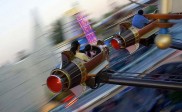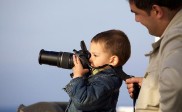Common Mistakes in Concert Photography
Concert photography
This common mistakes article refers to a difficult form of photography, which is concert photography. If you like live music and photography you will probably want to photograph at concerts. This type of photography requires good cameras and lenses and a good attention from the photographer. Because of the difficult light environment you usually find at concerts, it is very easy to make mistakes and get bad shots, so you should be aware of the following common mistakes and try to avoid them. However, as in any form of photography, practicing is the best way to improve your skills and your photographs.
1. Shooting from only one angle. You might get to concerts where it’s difficult to move around, but if you are taking photographs from only one angle you will get boring results. Instead, try to move and shoot from different angles and try to get as close to the stage as possible. Your main focus will be the artists so you should be in a place where you can see the stage and where the crowd doesn’t interfere with your framing.
2. Using flash. Unless you are shooting in a small club or venue and you have a good external flash, you shouldn’t use flash at concerts. The built-in flash of the camera should be avoided always as it casts a powerful light directly in front of your subjects and it minimizes the interesting stage light. You should try and shoot without a flash if possible. For example, in the image below I’ve used flash and although the image came out clear it misses some of the stage light which is part of the “atmosphere” of the concert.

Photo by GlorifyAxSmile
3. Not paying attention to what the band members are doing on stage. A great thing about concert photography is that you can capture some interesting moments during the performance of the artists on stage. Many bands make great live shows and you should pay attention at what they are doing on stage to try and anticipate the best moments to photograph. The expressions of the musicians performing are particularly interesting to capture and a good photograph can make those more obvious and more interesting for the viewers.
The following image and the one at the end of the article are good examples of what you can achieve when shooting at the right moment, by capturing the expressivity of the people on stage.

Photo by Valentin Gavan
4. Not using the right settings on the camera. If you are shooting without a flash, you will encounter difficulties in getting enough light into the camera. Finding the right settings might be difficult, but you should try and find a good balance between the ISO value, the aperture and the shutter speed. Try and use a high ISO value but that doesn’t add too much noise, an aperture where your subjects will be very sharp and a shutter speed high enough to prevent motion blur but low enough to let a good amount of light enter the camera. Also try to use always lenses with autofocus.

Photo by Valentin Gavan
In the above image I’ve focused manually and although the image came out interesting, the intention was not to blur the guitarist. But as it usually happens in such events, he moved fast just before I pressed the shutter so only the neck of the guitar appeared sharp in the final image.

Photo by Valentin Gavan
5. Not taking enough shots. If you are using a digital camera this should not be a problem. Shooting at a concert in a low light environment can cause a number of difficulties while trying to achieve a good photograph, motion blur is one of them and because of that you should take some extra shots. For example shooting in burst mode, 2 or 3 frames will be a good idea especially if you are using a slower shutter speed than usual because it is more likely you will get a clear image from at least one of them.
More resources of concert photography How To Take Great Concert Photographs




Great advice! We all make mistakes sometime and these are good things to consider.
http://www.concertphotosmagazine.com
http://www.performanceimpressions.com